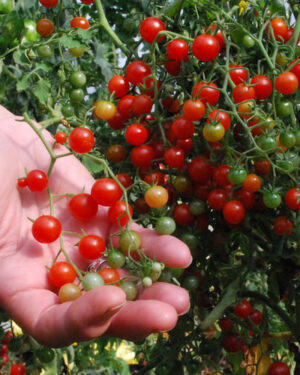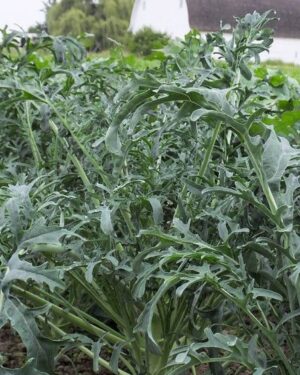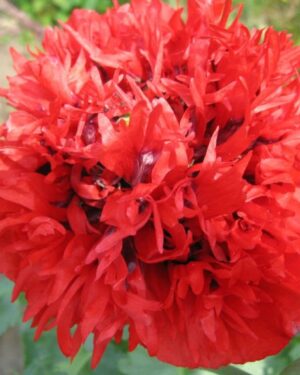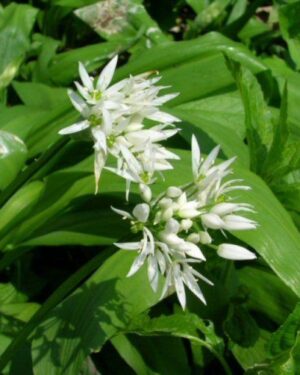Description
ORGANIC SPINACH PERPETUAL
ORGANIC SPINACH PERPETUAL . A perfect alternative spinach crop to avoid the most common problem of bolting during summer for many varieties. Rarely running to seed in its first season the variety performs well on dry ground . Spinach Perpetual is succulent, prolific and very hardy, suitable for autumn and winter crops too.
Cultivation Advice
- Ensure well-draining, nutrient-rich soil. Spinach prefers soil with organic matter. Aim for a slightly acidic to neutral pH level between 6.0 and 7.0.
- For Spinach Perpetual, you can sow seeds in early spring or late summer/early fall. Choose a time when temperatures are cooler to prevent bolting (premature flowering).
- Sow seeds directly into the ground about half an inch deep and 2-3 inches apart in rows or clusters. Ensure the location receives partial shade to full sun.
- Keep the soil consistently moist but not waterlogged. Spinach prefers even moisture. Water deeply to encourage root growth, especially during dry spells.
- Apply a layer of organic mulch around the plants to retain moisture, regulate soil temperature, and suppress weed growth. Mulch also helps in moisture retention.
- Once the seedlings emerge and develop a couple of true leaves, thin them to about 6-8 inches apart. This allows adequate space for the plants to mature and prevents overcrowding.
- Spinach doesn’t need heavy fertilization, but incorporating compost or a balanced organic fertilizer before planting can provide necessary nutrients.
- Keep an eye out for pests like aphids, leafminers, and slugs. Handpick pests if manageable or use organic pest control methods like neem oil or insecticidal soap.
- Prevent fungal diseases by avoiding overhead watering and ensuring good air circulation around the plants.
- You can start harvesting outer leaves once they reach a usable size, typically about 4-6 weeks after planting. Snip leaves at the base, leaving the inner leaves to continue growing.
- Regularly harvesting outer leaves encourages continual growth and prolongs the harvest period.
- Consider staggered plantings every few weeks for a continuous supply of fresh spinach. This practice ensures a steady harvest throughout the growing season.
- To prevent premature bolting in warmer weather, consider providing shade or planting in an area that receives partial shade during the hottest parts of the day.
- In colder climates, consider using row covers or cold frames to protect Spinach Perpetual from harsh winter conditions, allowing you to extend the growing season.
- Enjoy your organic spinach fresh in salads, sautéed as a side dish, or blended into smoothies. Store unwashed leaves in the refrigerator, loosely wrapped, for a few days.
- Regularly inspect your spinach for any signs of pests, diseases, or nutrient deficiencies. Prompt action can often prevent larger problems later on.
- Weed your spinach patch regularly to prevent competition for nutrients and water. Use organic methods to control weeds to maintain the organic integrity of your crop.
- Water your spinach plants early in the day to allow foliage to dry before evening, reducing the risk of fungal diseases. Use drip irrigation or water at the base of the plant to avoid wetting the leaves excessively.
- When harvesting, take outer leaves first and allow the inner leaves to continue growing. Regularly removing mature leaves encourages new growth.
- Use sharp scissors or a knife to snip off leaves rather than pulling, which can damage the plant.
- Periodically amend the soil with compost or organic matter to ensure a continuous supply of nutrients for your spinach plants. This helps maintain soil fertility.
- Consider planting spinach alongside companion plants like onions, radishes, or carrots, which can help repel pests or utilize space efficiently without competing for resources.
- If pests like aphids or leafminers become problematic, consider using natural predator insects like ladybugs or introducing companion plants that deter these pests.
- Be mindful of seasonal changes. In hotter months, monitor your spinach for signs of bolting. You can try to extend the harvest by providing shade or planting in cooler spots.
- If you wish to save seeds, allow some plants to bolt and produce flowers. The flowers will turn into seed pods. Allow these pods to dry on the plant before collecting the seeds for future planting.
- Practice crop rotation to prevent soil-borne diseases and maintain soil health. Avoid planting spinach in the same spot year after year.
- Keep records of your spinach cultivation practices, including successes and challenges. This information will help you refine your approach in subsequent growing seasons.









Reviews
There are no reviews yet.